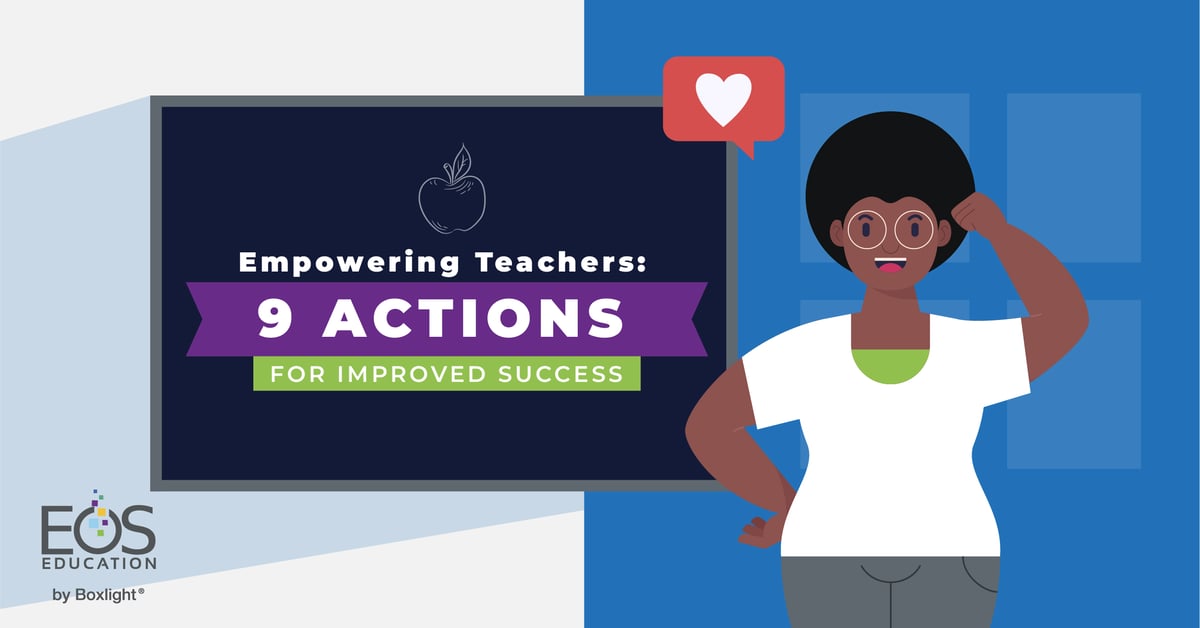Teachers' roles have changed in the evolving education field. They are no longer mere conveyors of information - they are facilitators of learning, mentors, and champions of student success. To empower teachers and improve the learning experience, investing in high-quality teacher professional development is essential. Discover why investing in teacher professional growth matters, with a focus on classroom technology, best practices, new strategies, and the goal of enhancing student learning and success.
What Professional Development Helps Teachers Do
1. Adapt to Classroom TechnologyTechnology has become an integral part of the educational process, transforming teaching and learning. For technology to be truly effective, teachers need to have the skills and confidence to integrate these innovative tools. Teacher professional development provides the training and support necessary to harness the power of classroom technology.
Teachers who receive continuous training in using educational technology are better equipped to engage students and personalize instruction. Whether it's implementing interactive displays, digital learning platforms, or online collaboration tools, consistent and effective training ensures that teachers make the most of these resources.
2. Implement Best Practices
Teacher professional development drives best practices in education. Ongoing training keeps teachers current with research, and they learn how to incorporate evidence-based strategies that are proven to be effective for student learning.
One of the critical aspects of this process is understanding how to differentiate instruction. Teachers learn to tailor their instructional methods to accommodate diverse student needs. This personalized approach has a profound impact on student success, helping students build confidence as they progress academically.
3. Explore New Strategies and Methods
In education, innovation is crucial. What worked before may not fit today's classrooms. Professional development empowers educators to adopt current methodologies like project-based learning, Nano learning, Design Thinking, and inquiry-based instruction, enhancing their skills and enriching students' learning.
For instance, in a project-based learning approach, students might collaborate on real-world problems, deepening their understanding and critical thinking. Using Nano Learning, teachers deliver bite-sized lessons on specific topics students can quickly grasp concepts. For example, showing a 2-minute video explaining a new mathematical skill. By embracing such methods through professional development, teachers can create a more engaging and meaningful learning experience.
4. Foster Lifelong Learning
Teachers who prioritize professional growth encourage a lifelong learning culture. Leadership that provides high-quality, practical, and ongoing training are more likely to encourage teachers to seek out new information, resources, and opportunities for growth. This mindset is contagious and can inspire students to adopt a similar approach to their education.
Educators – teachers, administrators, support personnel - who are lifelong learners are better equipped to adapt to changes in the educational landscape. As curricula, teaching methods, and student needs evolve, teachers who prioritize professional development can more easily adapt to these changes and continue to excel in their roles.
5. Measure Student Learning and Success
Ultimately, the goal of teacher professional development is to improve student learning and success. Teachers play a pivotal role in shaping the future of their students, and investing in their development directly impacts the quality of education students receive.
Through ongoing training, teachers learn how to assess and address the individual needs of their students. They can use data-driven strategies to track student progress and make informed instructional decisions which leads to better academic outcomes and contributes to a positive and empowering learning environment.
6. Return on Investment
Professional development in the education setting can yield a substantial return on investment when technology is integrated properly in classrooms. Teachers who receive comprehensive training on technology usage can effectively harness these tools that their schools invested in by enhancing student engagement and learning outcomes. Well trained teachers can adapt to the ever-evolving technological landscape, ensuring that the investment in classroom technology remains relevant and valuable over time.
Ultimately, the upskilling of educators in technology not only benefits students, but also contributes to a more efficient and productive educational environment, making it a smart investment for schools and educational institutions.
7. Enhance Student Engagement
Engaged students are more likely to succeed academically. Effective, skillfully led professional development for teachers equips educators with the tools and strategies to keep students engaged in the learning process. It helps teachers create dynamic and interactive lessons that capture students' interest and curiosity.
Incorporating active learning techniques, promoting critical thinking, and fostering a sense of ownership in their education are some of the outcomes of effectively guided professional development. These strategies lead to increased student engagement, which is closely linked to improved academic performance.
8. Address Diverse Learning Needs
Every classroom is a diverse microcosm of unique learning needs and professional development guides teachers in understanding and addressing these needs effectively. Quality professional development content can provide insights into accommodating students with varying abilities, learning styles, and cultural backgrounds.
Teachers learn to adapt their instruction to support English language learners, students with disabilities, and those who may be struggling academically. This inclusivity ensures that all students have the opportunity to succeed and reach their full potential.
9. Build Stronger School Communities
Investing in teacher professional development also contributes to building stronger school communities. When teachers are continually growing and sharing their knowledge and experiences, it fosters a culture of collaboration and support.
Teachers who actively participate in professional development become resources for their colleagues. They share best practices, innovative ideas, and strategies that have worked in their classrooms. This collaborative environment benefits not only the teachers themselves but also the students they serve.
Investing in well-researched, expertly crafted, and effectively delivered teacher professional development is crucial for empowering teachers and boosting student learning and success. It provides teachers with the expertise to proficiently and confidently integrate classroom technology, apply best practices, explore innovative strategies, and address the unique requirements of their students. As teachers continually develop their skills and knowledge, the entire educational community reaps the rewards, ultimately leading to improved student outcomes and the advancement of the education system as a whole.
To explore EOS Education award-winning teacher professional development services, go to https://boxlight.com/services/professional-development-for-teachers.



